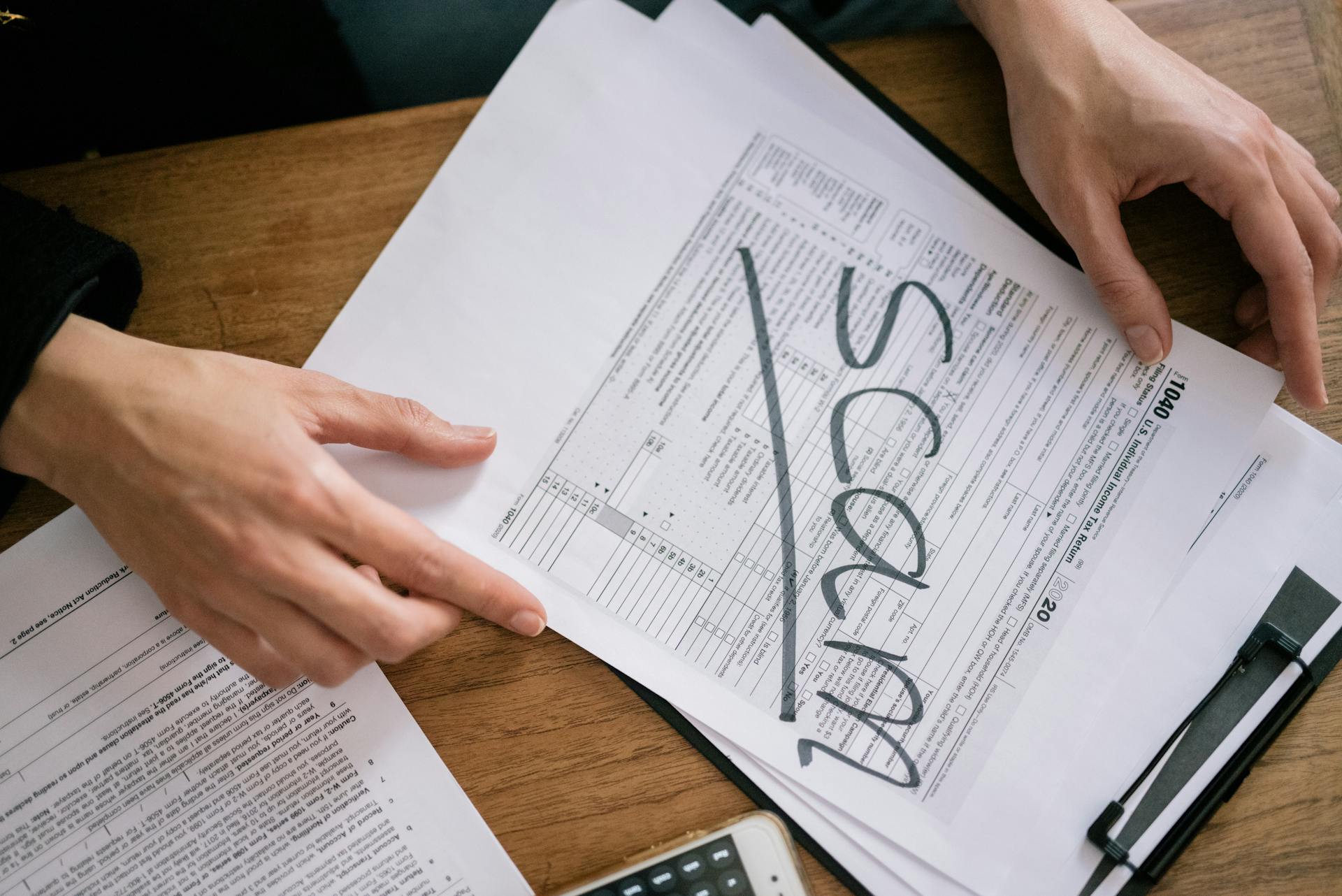
Cash received in advance journal entry accounting can be a bit tricky, but essentially, it's a transaction where a customer pays for a product or service before it's actually delivered.
For example, let's say a customer pays $1,000 for a product that will be delivered in three months. This is considered cash received in advance.
To record this transaction, you'll need to make a journal entry that recognizes the cash received and increases the customer's account balance.
The journal entry would look something like this: Debit Cash $1,000, Credit Unearned Revenue $1,000.
Check this out: Treasury Stock Journal Entry
What Is
When a customer pays for a product or service before it's delivered, this is known as Unearned Revenue.
This type of revenue is recorded as a liability on the balance sheet, because the company hasn't yet earned it. In accounting terms, it's called a "customer advance."
To illustrate this, let's consider an example: when a customer pays for a product that's still being manufactured, the company debits the Cash Account and credits the Customer Advance Account. This is because the customer advance is an increase in both the company's asset (cash) and liability (customer advance).
Here's an interesting read: Company Cash Advance
The customer advance is shown on the liability side of the balance sheet until the related revenue is earned. This typically happens when the final product is ready for delivery.
Here are the key steps involved in accounting for customer advances:
- Debit the Cash Account and credit the Customer Advance Account when the advance is received.
- Remove the customer advance from the liability side of the balance sheet when the related revenue is earned.
- Clear the Customer Advance Account by debiting it and crediting the Accounts Receivable Account.
By following these steps, companies can accurately record customer advances and reflect the true financial position of their business.
Recording Customer Advances
Recording customer advances is a crucial step in accounting, and it's essential to understand how to record it correctly. You debit the cash account and credit the customer advance account when a customer pays in advance for a service or product.
In accrual-based accounting, revenue is earned when the final product is ready for delivery, and an invoice is sent to the customer. At this point, the customer advance account shown as a liability on the balance sheet is removed.
To clear the customer advance account, you debit the customer advance account and credit the accounts receivable account. This is done when the service or product is delivered, and the customer is invoiced.
Take a look at this: Sold Services on Account Debit or Credit
Here's an example of how to record a customer advance:
- January 1: Debit cash account $300 and credit customer advance account $300
- February 1: Debit customer advance account $25 and credit revenue account $25 (assuming a monthly subscription fee of $25)
- February 1: Debit accounts receivable account $25 and credit customer advance account $25
This process continues until the customer advance account is cleared, and the revenue is recognized.
It's worth noting that unearned revenue is not recorded on the income statement as revenue until it's earned. Instead, it's found on the balance sheet as a liability. Over time, the revenue is recognized once the product or service is delivered, and the deferred revenue liability account declines.
Here's a summary of the journal entries for recording customer advances:
By following these steps and journal entries, you'll be able to accurately record customer advances and recognize revenue when it's earned.
Managing Customer Advances in Accounting Software
Managing customer advances in accounting software can be a breeze. You can record deferred revenue under the 'other current liability' option in Quickbooks, just like in Example 7.
To set it up, create products and services, and edit the income account to deferred revenue. This will help you track customer advances accurately.
For more insights, see: A Deferred Revenue Liability Appears on the Balance Sheet For:
When a customer pays in advance, you'll want to record the journal entry for advance received from a customer. This involves debiting the cash account and crediting the customer advance account, as shown in Example 1.
You can use the three golden rules or modern rules for bookkeeping, depending on your preference. The key is to recognize the customer advance as a liability until the related revenue is earned.
Here's a summary of the steps to record a customer advance:
- Debit the cash account for the amount received
- Credit the customer advance account for the amount received
- Recognize the customer advance as a liability on the balance sheet
By following these steps, you'll be able to manage customer advances effectively in your accounting software.
Explained
Unearned revenue is recorded as a liability on the balance sheet because the company has an obligation to provide goods or services in the future. It's like a promise or obligation to deliver something in the future.
Deferred revenue is shown as a liability because it represents money that has been received for goods or services that have not yet been provided to the customer. This money is considered a liability because there's a possibility that the good or service may not be delivered or the buyer might cancel the order.
Check this out: Prior to the Adjusting Process Accrued Revenue Has
The company would have to repay the customer in either case unless other payment terms were explicitly stated in a signed contract. This is why deferred revenue is recorded as a liability on the balance sheet.
Here are some examples of scenarios in which unearned revenue is recorded:
- Unused Gift Cards
- Annual or Multi-Year Subscription Plans
- Insurance Premium Payments
- Prepayment on Rent
- Future Service Agreements with Product Purchases
- Implied Rights to Future Software Upgrades
In the case of accounts receivable, the remaining obligation is for the customer to fulfill their obligation to make the cash payment to the company in order to complete the transaction. This is the opposite of deferred revenue, which is recorded when the company has already received payment from the customer.
Unearned revenue is not recorded on the income statement as revenue until it is earned. It is instead found on the balance sheet as a liability. Once the transaction is completed, the payment is formally recognized as revenue because it is now earned.
For your interest: The Receipt of Cash in Advance from a Customer
Sources
- https://www.accountingcapital.com/journal-entries/journal-entry-for-advance-received-from-a-customer/
- https://baremetrics.com/blog/what-is-unearned-revenue-and-how-to-account-for-it
- https://www.investopedia.com/terms/d/deferredrevenue.asp
- https://finvisor.com/deferred-revenue/
- https://www.wallstreetprep.com/knowledge/unearned-revenue/
Featured Images: pexels.com


